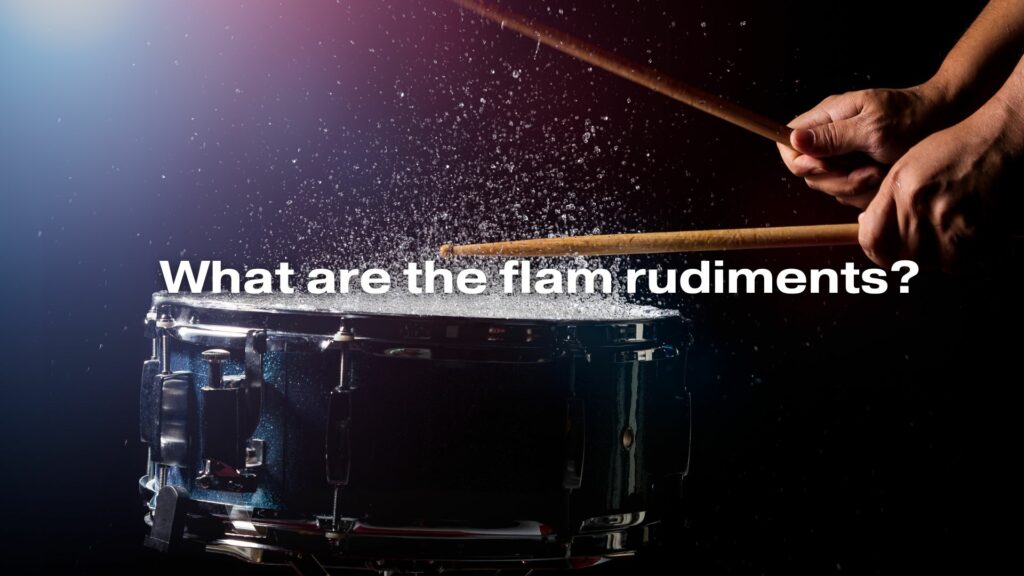In the world of drumming, rudiments are the fundamental patterns and techniques that serve as the building blocks of a drummer’s skill set. Among these rudiments, flam rudiments stand out as a category that adds flavor and dynamic accents to a drummer’s arsenal. Flam rudiments are not just exercises; they are essential techniques that introduce subtle yet powerful nuances to drumming performances. In this article, we will explore the world of flam rudiments, understand what they are, how to practice them, and their significance in the drummer’s toolkit.
Understanding the Flam Rudiments
Flam rudiments are characterized by the inclusion of a grace note, which is a quieter, unaccented note, followed by a full-volume accented note. The grace note is played slightly ahead of the accented note, creating a distinct and dynamic accent. Flam rudiments are versatile and can be applied to a wide range of musical styles, from rock and funk to jazz and orchestral settings.
Common flam rudiments include the Flam, Flam Accent, and Swiss Army Triplets, among others.
- Flam: The basic flam rudiment consists of a grace note followed by an accented note, typically played with the opposite hand. In notation, it is represented as “fR” (flam with the right hand) or “fL” (flam with the left hand).
- Flam Accent: The Flam Accent combines flams with single strokes, creating a rhythmic pattern that adds dynamic accents to drumming phrases. It is an effective way to introduce subtle dynamic variations into drumming.
- Swiss Army Triplets: Swiss Army Triplets incorporate flams and single strokes to create a more complex and rhythmically rich pattern. This rudiment is known for its versatility in creating dynamic fills and accents.
Practicing Flam Rudiments
Mastering flam rudiments requires dedicated practice and attention to detail. Here are the steps to effectively practice flam rudiments:
- Hand Position: Start with proper hand positioning. Maintain a relaxed grip on the drumsticks and keep your wrists and fingers flexible.
- Begin Slowly: Initiate your practice at a slow and manageable tempo. Focus on executing the grace notes and accented notes with precision.
- Use a Metronome: Practicing with a metronome is beneficial for developing timing and maintaining a consistent tempo.
- Controlled Flams: Concentrate on playing the grace note and accented note with control. The grace note should be played slightly ahead of the accented note for a noticeable flam effect.
- Gradually Increase Speed: As you become more comfortable, increase the speed of your flam rudiments. The goal is to maintain a smooth and controlled sound.
- Dynamic Control: Work on playing flams at various dynamic levels. Practice both soft and loud flams to build control and finesse.
- Rhythmic Variety: Experiment with incorporating flams into different drumming patterns and fills to enhance their rhythmic complexity.
Significance of Flam Rudiments
Flam rudiments are significant for several reasons:
- Dynamic Accents: They add dynamic and expressive accents to drumming phrases, enhancing musicality and complexity.
- Versatility: They can be applied to a wide range of musical styles, allowing drummers to express themselves in diverse musical contexts.
- Subtle Nuances: Flam rudiments introduce subtle nuances and variations into drumming patterns, making the performance more interesting and engaging.
- Building Drumming Vocabulary: Flam rudiments expand a drummer’s rudimental vocabulary and can be applied creatively in various musical settings.
- Artistic Expression: They provide a means for drummers to infuse their drumming with artistic expression and individuality.
In conclusion, flam rudiments are essential components of a drummer’s skill set, allowing for a wide range of dynamic and expressive possibilities in drumming. By mastering flam rudiments, drummers can enhance their ability to create engaging and dynamic performances in a variety of musical genres and settings.


